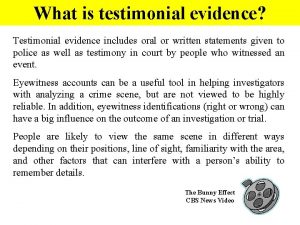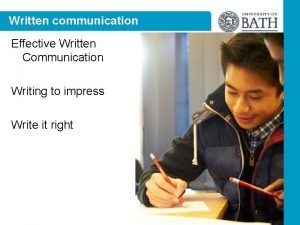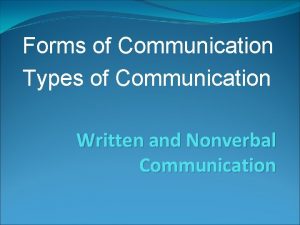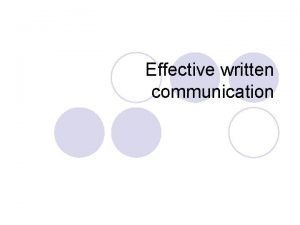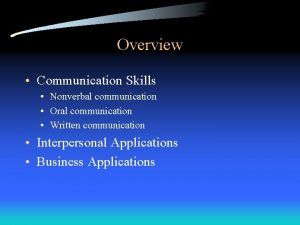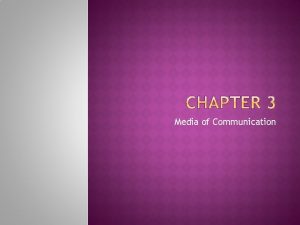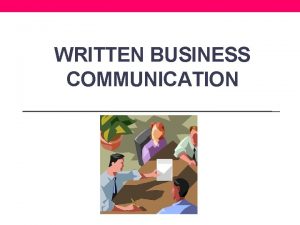Management of oral and written communication Oral communication











- Slides: 11

Management of oral and written communication

Oral communication l l l l l Face to face conversation Meetings Interviews Seminars Conferences Group discussions Telephonic conversations Teleconferencing Video conferencing Voice-mails

Oral communication is more often used --1. Quicker 2. More effective to reach out to masses 3. Modulation conveys moods, facial expressions speak more than language. 4. It is personal 5. Less expensive in case of face to face.

Disadvantages l If unplanned , chances of mistakes l Retention of lengthy messages is difficult and important parts may be missed out. l No accountability as no record l Repetition required if not heard l Poor communicators may not convey message effectively l Not confidential

Written skills l l l Planned and organized, takes more time Documented thus official communication Writer responsible for content Dissemination of information is easier Documents carry important information such as facts and statistics. Includes letters, memos, reports, proposals, notices, minutes, circulars, manuals, newsletters, journals.

Disadvantages l Time consuming l Face to face missing, no personal touch l Expressions, feelings not conveyed l Good written skills essential for impact l Effect of communication happens only when receiver receives the communication

Effective oral communication l l l l The most important component is voice. Modulation, stress convey moods Pronunciation Avoid colloquial/slang usage Eye contact Body language must convey the right meaning Message needs to vary as per the audience

Effective written communication l Usage of forceful and appropriate words l Precise, complete and correct informatio l Communication can be presented diplomatically l Avoid exaggeration l Good communication creates an impression l Avoid negative words

Non verbal communication

1. Body language. Facial expressions Gestures Posture Appearance 2. Space 3. Time 4. Signs and symbols 5. charts, maps, graphs 6. Posters 7. Colour and layout 8. Sound

Assignment-marks 5 Q 1 effective communication is called the life line of an organization. (mention the factors). Discuss Q 2 Upward communication is dependent on downward communication. Explain
 What is oral communication and written communication
What is oral communication and written communication Difference between oral and written communication
Difference between oral and written communication Written and oral torah
Written and oral torah Testimonial evidence includes oral or written
Testimonial evidence includes oral or written What is formal writing style
What is formal writing style Effective written communication
Effective written communication Benefits of report writing
Benefits of report writing Written communication healthcare
Written communication healthcare Types of written communication
Types of written communication Effective written communication
Effective written communication Written communication skills
Written communication skills Written communication skills
Written communication skills



